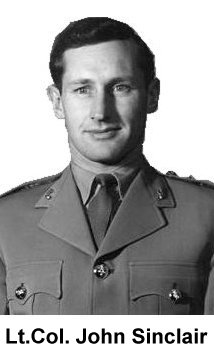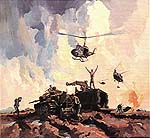
VALE BOB THOMPSON
WO1 Bob Thompson (Rtd) passed away on 5th May 2021
NOTE
This website may include dead links and incorrect pages.
It is offered "AS IS"
Introduction

The Birth of www.raeme.info started about 35 years ago when an old friend Lt. Col. John Sinclair, and I were having a yarn and John suggested that we should try and save the army inventing the wheel again.
John had the knowhow of computers and said he would set up a website and it would be my job to solicit stories, pictures, inventions, to put on the website. So I applied for a website and www.raeme.net was born. John did the layout and slowly we gathered articles/stories/pictures for the website. For some unknown reason I lost the website to a business in London England, hence I had to buy another, now called www.raeme.info
Some years ago John was talking to me and was concerned that because I am much older than he is, I should get someone to take over the site after I die. Then early October 2011 he rang me and announced he wasn’t well and he was sorry but it looked like I was to be on my own re the website. Then sadly, my old friend that I had known and liked since about 1956 when he was posted to Puckapunyal Workshops passed away on the 2nd November 2011.
I quickly looked around for someone to run the website in John’s absence and was extremely grateful that an old 106 Wksp Tels expert Cpl. Elmer Varga took over the running of the website for me. Later on, the RAEME Association agreed to take over hosting of my website and allow the Webmaster of RAEME Association Victoria Pat Marley to control www.raeme.info on my behalf.
Date 3 July 2015.
RAEME's mission in close support of fighting formations is to ensure the Commander has available to him as much as possible of his battle inventory to plan, launch and execute actions against the enemy.
To this aim :-
- Repair is undertaken as far forward as possible to get casualties and break-downs back into action as quickly as possible; the priority is the needs of the immediate operational situation for battleworthy equipment[1] ahead of maintenance and conservation of the equipment inventory. Repair Units deploy Forward Repair Teams (FRTs) to casualty sites, by any means available, and, as required, with the close support echelons of Arms Units, or in some situations, their fighting echelons.
- Recovery is deployed across the Area of Operations and the battle field, including, as required, within the Arms fighting echelons, providing mobility support by unditching equipment, clearing routes of break-downs, casualties and wrecks, and assisting equipment through defiles and over bad going. Casualties and breakdowns that cannot be got back into action in the field, and equipment abandoned on the battlefield, are backloaded as soon as possible to more static repair workshops
Local Modification
A job, that only arises in active operations, is devising quick but controlled fixes to counter enemy anti-equipment tactics.
- The first priority is to save live and limb of the crews by temporary modification;
- the second is to reduce the severity of damage to a level which enables repair rather than writeoff, conserving the Inventory
Similarly, fixes are often needed to overcome equipment defects due to the physical environment in the Area of Operations, and, to extend the capabilities of equipment by adaption.
Engineering Monitoring of Equipment
This repair regime, by its nature, results in equipment degrading during periods of intense action and due to locally approved modification. To counter this, equipment condition, reliability and status is continually monitored at unit, formation and higher command levels. This provides intelligence to the Commander on the operational capability and endurance of his Force now, and for future planning, and, it enables available engineering capacity throughout the support chain to be best directed to conserve the Inventory.
Engineering Practicalities
While established engineering principles and techniques remain the guiding light for engineering management, major adaptations have to be made in the Forward Areas especially during active operations.
Forward repair in the field under conditions of threat and constant preparedness to defend and fight, and with limited engineering facilities in the way of cover, hard standing, lift, services, pre-planning, test equipment, machine and power tools and repair parts immediately at hand, demands not only high levels of military and trade skill but also ingenuity and a certain attitude and foresight.
Routinely the field repair, recovery and engineering management techniques needed in an Operational Theatre have to be adapted in a way that is rarely used, or appropriate, in a base or training environment. Often the techniques used in previous conflicts need to be rediscovered.
A Bank of Experience
In the skilled men who, for over half a century, have served, or are serving with the Corps, there is a vast wealth of know-how gained from experience in Operations or preparing for them. The purpose of these pages is to tap that experience and hand it on by recording first-hand recollections irrespective of the equipment, Unit or era
If you are one of these please contact us on the link at the top of the page.
[1].. Excepting aircraft because of the consequences of catastrophic failure


